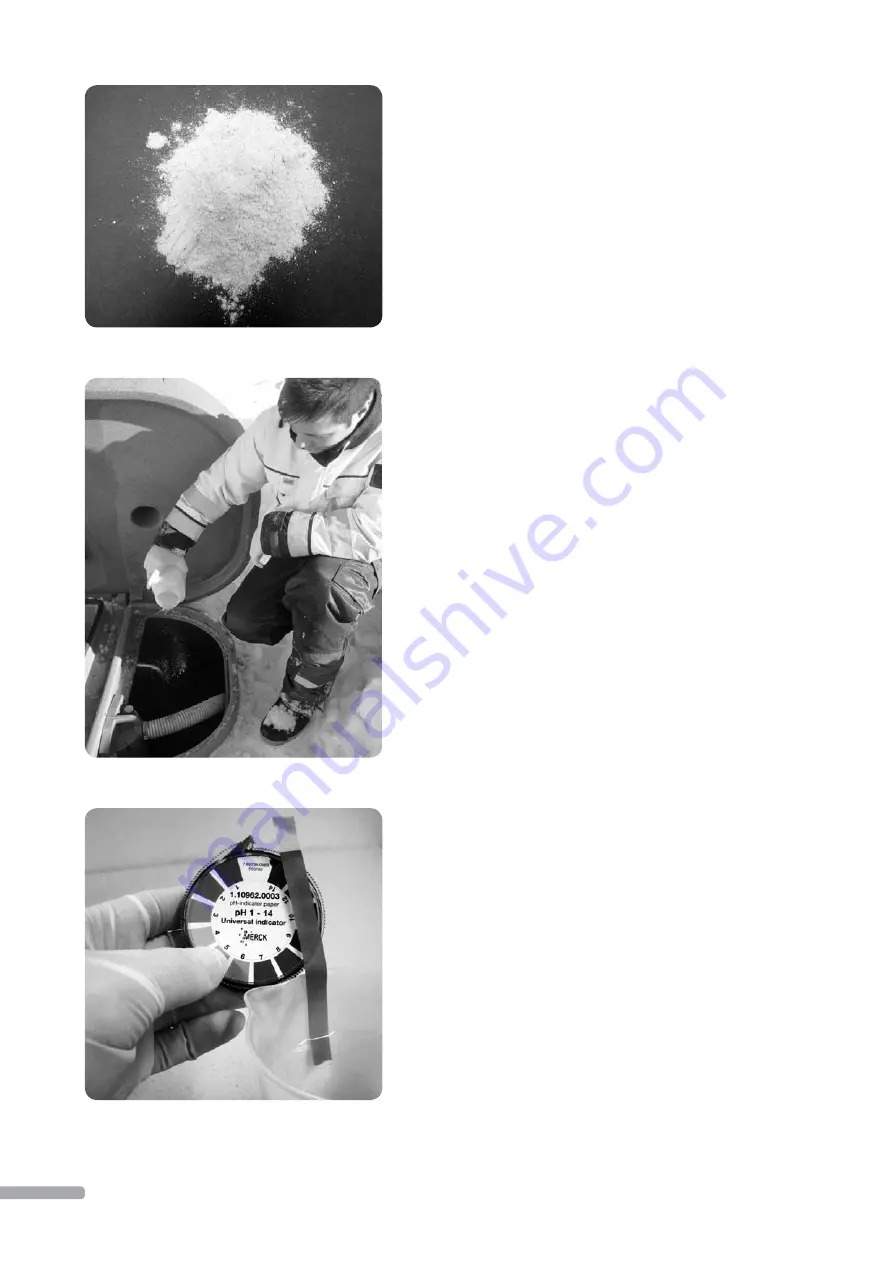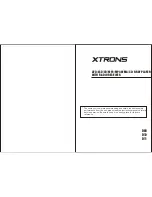
5.5 Treatment plant pH
adjustment
A low pH in the treatment plant
process tank may result in a
decrease in sludge particle size,
which infl uences sludge behaviour
in the sludge bag. However, the
treatment results are not directly
infl uenced by the pH value.
The simplest way to adjust the
treatment plant pH is by liming.
The pH adjustment is recommend-
ed if the pH value in the treatment
plant is below 6.
If the household water pH is low,
so is the treatment plant pH. Well
water should be examined accord-
ing to recommendations at least
every three years.
5.5.1 Lime type
The correct type of lime for the
treatment plant is lime ground
from limestone crush. Limestone
crush is used in agriculture and as
garden fertilizer. The lime should
be as fi ne as possible for it to have
an effi
cient eff ect. The pH can also
be adjusted with sodium (sodium
hydroxide).
Hydrated lime must not be
added into the treatment plant
as it is a strong alkali that may
lead to active sludge death.
Picture 42
Picture 43
Picture 44
5.5.2 Dosing and monitoring
Lime is added into the treatment
plant’s process tank (picture 43).
Aeration should be on in the pro-
cess tank at the time of liming so
that the lime dissolves as effi
ciently
as possible. If the process tank is
not bubbling at the time of liming,
the compressor plug can be tem-
porarily moved to the X6 service
socket to start the aeration process
immediately. The plug must be put
back to its own place aft er liming.
Lime will raise the pH to neutral
(pH 7). There is no risk of overdos-
ing with the correct lime type. In
the beginning, it is recommended
to add 2dl of lime 2 to 3 times per
week. The dosage amount depends
on the treatment plant pH.
The active sludge of the process
takes some time to adjust to the
changed conditions, and the pH
should be monitored, for example,
using pH strips that are available
at pharmacies (picture 44). When
the pH reaches a neutral value, it
may not be necessary to maintain it
with a weekly dose.
22










































